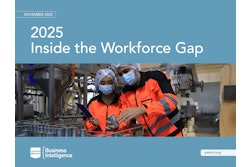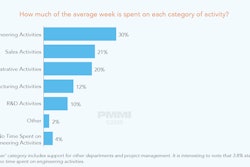One of the three most important pillars in the OpX Workforce Engagement document is Connection (Empowerment, Enablement), specifically how a company communicates with employees and helps them understand the company beyond their day-to-day operational activities. When employees don’t see the bigger picture—vision, mission, strategy, action plan—or understand just how their work contributes to it, they are less likely to be engaged.
Under the Connection pillar, the OpX Workforce Engagement document describes just how the best CPG companies communicate a compelling vision, a well-thought-out strategic plan, a robust business plan, and the corresponding key performance indicators (KPIs) to measure that ensure success (see Success Cycle graphic, opposite page). But a recent Harvard Business Review article points out that only a small number of companies are actually successful at linking strategy to action.
Perhaps the most important reason for this is that those employees responsible for the day-to-day operational activities are rarely involved in strategy development because it is traditionally seen as the domain of senior-level executives. As a result, the corresponding action plan and operational KPIs for which plant-level employees are now responsible are not fully understood because they were not involved in their development or a robust rollout plan from leadership. In fact, because leadership did not solicit input from the shop floor, the connective KPIs and action plans might not be the best ones.
While the OpX Workforce Engagement document identifies some solutions to this dilemma, some recent work by the FSO Institute offers additional insights and experiences to make the link between strategy and action quicker, easier, more inclusive, and at multiple levels within the organization. Most importantly, it provides engagement opportunities for day-to-day employees to provide input and help them better understand the why of what they do and just how their work contributes to it.
To learn more about this new way of linking strategy to action, FSO Institute spoke with Dan Sileo, an FSO coach formerly with Procter & Gamble, Sunny Delight, and Sugar Creek Foods.
FSO Institute: Dan, you’ve recently worked with some CPG companies that were able to address this strategy-to-action link by bringing together some senior-level, supervisory, and line employees to get them all aligned on vision, strategy, action planning, and outcome measures. Can you briefly describe how you did this?
Sileo: There are four common tools that have been used for many years to drive the process. These are the Success Cycle; the Strength, Weakness, Opportunity, Threat (SWOT) analysis; the Strategy Development Template; and the introduction of the Responsible, Accountable, Consulted, Informed (RACI) chart. A quick word of caution: Many times people within an organization will push back against these tools as dated and not relevant because new generational groups think differently. We typically lead a discussion about how the tools can evolve to meet the needs; and if we include the generational groups the organization is concerned about, it typically addresses the issue.
We begin with some just-in-time training on the Success Cycle and explain how the Vision and Strategy portions set the direction and the Action and Outcomes sections deliver the role clarity and deployment of resources. The final part of this discussion relates the Success Cycle to the PDCA process (Plan, Do, Check, Act), which makes the rollout conversation to the shop floor more relevant since it is a widely known process.
We then enter into a SWOT analysis, typically with a few groups consisting of a cross-section of functions and levels. This brings a diversity of thought and begins the process of buy-in to the strategies to be engaged in.
Next is a scan to look for common grouping of items that the working groups believe need to be addressed. We try to help them limit it to the top five and capture others as the potential next round of focus areas once the current ones have been sufficiently addressed.
Finally, we have a discussion concerning the path forward to include action planning. Once there is alignment with senior leadership, we demonstrate how a RACI chart aligns and deploys resources.
FSO Institute: Linking the SWOT analysis into an actual strategic plan has traditionally been a slow, laborious process. I understand that you used artificial intelligence (AI) to speed up the process and make this part of strategy development far less cumbersome and time-consuming. How did you do this?
Sileo: Embracing AI to do the first blush of analysis really did speed up the process. What normally would take a few days and multiple iterations across at least two to three people to ensure groupings make sense, AI was able to do this in just a few minutes. We type up the SWOT analysis in one PDF document and the five top themes identified in another, and ask AI to place each item in the group that it best fits in. After we do a quick run-through to make sure what was presented makes sense, we then ask AI to convert the groupings it just made into strategy statements of no more than two to three sentences. Again, we scan to make sure that what is presented makes sense and adjust as necessary. We now have a document that can be shared with leadership to begin the catch ball process (feedback from all stakeholders).
FSO Institute: You’ve had a lot of experience in getting plant-level, operations employees more engaged in their work. What do you see as the major benefits of involving them more in the strategy-to-action planning process?
Sileo: We like to drive the Buy-in, Ownership, Advocacy (BOA) model. By getting involvement early in the process, we jumpstart the buy-in part of the model. A way to think about this in a more detailed way is explained by the Attributes of a Culture of Collaboration (Ali, Pascoe & Wayne). When people are involved, it drives empowerment, forgiveness of mistake making, trust, commitment, sharing of information, openness, and cultural cohesiveness—all of which drive employee engagement. In other words, don’t just tell them, involve them.























